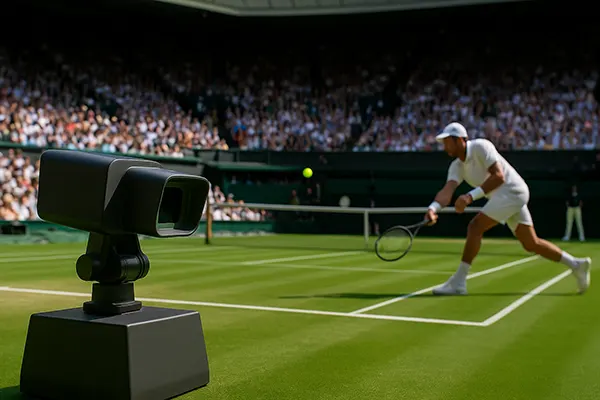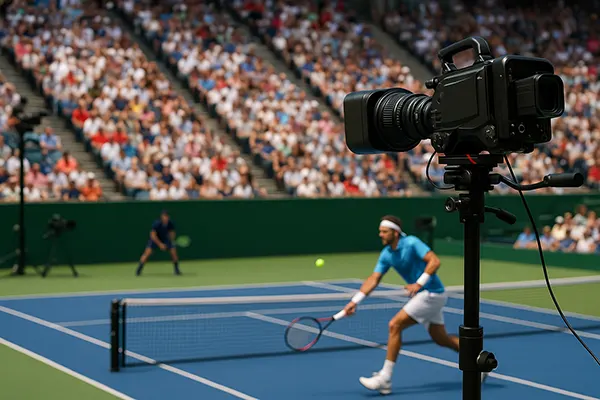
How Electronic Video Judging Systems Transformed Major Tennis Tournaments
The implementation of electronic video judging systems in professional tennis has fundamentally reshaped how matches are officiated, increasing accuracy, fairness, and transparency. From the early introduction of the Hawk-Eye system in the mid-2000s to today’s fully automated electronic line-calling technologies, tennis has evolved into one of the most technologically advanced sports. By 2025, these systems are no longer experimental tools but an integral part of all major tournaments, including Wimbledon, the US Open, and the Australian Open.
The Evolution of Technology in Tennis Officiating
Electronic video judging first entered the tennis scene after several controversial calls in high-profile matches led to public and player dissatisfaction. The Hawk-Eye system, originally developed for cricket, was introduced to tennis in 2006 at the US Open as a challenge-based review tool. Players were granted limited opportunities to challenge a call, and the system would analyse multiple camera angles to produce an instant replay.
Over time, as the technology became faster and more precise, tournament organisers started relying on it not only for reviews but also for live line-calling. By 2021, the ATP and WTA Tours began experimenting with fully automated officiating, using high-speed cameras and AI-powered tracking to detect ball contact and determine if it landed in or out.
By 2025, all four Grand Slam tournaments have adopted some form of electronic line-calling, though the degree of automation differs. Wimbledon continues to use a hybrid model with human chair umpires and limited Hawk-Eye Live integration, while the Australian Open now relies entirely on AI-assisted systems with no on-court line judges.
Accuracy, Fairness, and Player Trust
One of the most significant benefits of electronic video judging systems is their precision. Current models achieve an error margin of less than 3 millimetres, which far surpasses human capabilities, particularly during high-speed rallies. This reliability has reduced disputes on court, allowing players to focus on performance rather than officiating errors.
Moreover, the system’s transparency has helped foster greater trust among athletes and fans alike. Decisions are displayed instantly on stadium screens, leaving little room for interpretation or controversy. This level of visibility has strengthened tennis’s image as a sport of integrity and fairness.
Nonetheless, not all players are entirely comfortable with the absence of human oversight. Some, including Novak Djokovic and Rafael Nadal, have expressed concerns that the game risks losing its traditional human element. However, most professionals recognise that the benefits of accuracy and consistency outweigh these sentimental considerations.
The Role of Artificial Intelligence in Line-Calling
Modern video judging systems use artificial intelligence to process data from multiple high-speed cameras positioned around the court. These AI algorithms analyse the ball’s trajectory, speed, and spin to predict the exact contact point with the surface, providing decisions in real time without human intervention.
In 2023, Hawk-Eye Innovations unveiled its next-generation system that integrates machine learning to adapt to different court conditions, lighting, and camera angles. This flexibility allows the technology to function reliably across clay, grass, and hard courts, addressing early limitations where certain surfaces posed detection challenges.
The introduction of AI has also enabled richer statistical analysis for broadcasters and coaches. Real-time ball-tracking data contributes to detailed player performance metrics, enhancing both audience experience and professional training processes.
Challenges and Ethical Considerations
Despite its technological sophistication, the shift to AI-based officiating is not without challenges. Critics point out that complete automation reduces employment for human officials and diminishes the human judgment that has long been part of the sport’s character. This debate echoes broader global concerns about AI replacing human expertise in professional fields.
Another key issue involves data privacy and system transparency. As the systems rely on continuous video surveillance and data collection, governing bodies must ensure compliance with data protection standards such as the EU’s GDPR. In addition, independent audits of algorithms are necessary to verify the impartiality and reliability of automated decisions.
From an ethical standpoint, experts emphasise that AI should assist rather than dominate decision-making in sports. Ongoing cooperation between engineers, players, and officials remains vital to maintaining the integrity of competition.

Future Perspectives: The Next Stage of Digital Umpiring
Looking ahead, the integration of advanced sensors, 3D mapping, and predictive analytics is expected to elevate electronic judging systems even further. Several tennis technology companies are exploring ways to merge AI officiating with augmented reality, allowing players and fans to view live trajectories and ball impact points through wearable devices or smart screens.
By 2025, pilot projects supported by the International Tennis Federation (ITF) are testing hybrid models where AI collaborates dynamically with chair umpires, providing real-time recommendations while retaining human oversight. Such systems aim to balance precision with the human touch that many believe is essential to tennis’s tradition.
In parallel, these innovations are driving accessibility for lower-tier tournaments. Portable AI line-calling kits are now available for smaller events and junior competitions, democratising technology that was once exclusive to elite tournaments. This ensures fair play across all levels of the sport.
Long-Term Impact on the Sport
The long-term influence of electronic judging systems extends beyond officiating. They have transformed fan engagement, broadcasting quality, and the educational value of tennis analytics. Coaches now rely heavily on data from these systems to refine player positioning and improve match strategies.
Economically, the adoption of automated systems reduces operational costs for tournament organisers by minimising the need for extensive human officiating crews. Simultaneously, it enhances sponsor appeal, as matches run more efficiently with fewer interruptions due to disputes or replays.
Ultimately, electronic video judging has set a new global standard for fairness and innovation in professional tennis. As the sport continues to evolve, the partnership between technology and human expertise promises to ensure that tennis remains both traditional in spirit and progressive in execution.
